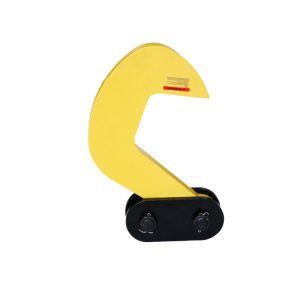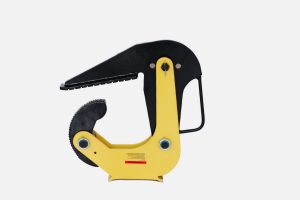TEL:+86 13179668188 E-MAIL:alina@volsn.com
BLOG
- Home
- »
- BLOG

Important Safety Tips for Using a Lifting Clamp
A Guide for Safe and Efficient Operation The lifting clamp is an essential tool for safely lifting and transporting heavy steel plates, widely used in construction, manufacturing, and shipping industries. Proper usage of a lifting clamp can significantly boost work efficiency and reduce accident risks. However, improper use may lead to equipment damage or personal injury. This guide covers the key safety tips for using a lifting clamp, helping you achieve a smooth and secure lifting experience. 1. Verify the Lifting Clamp’s Load Capacity Before using any lifting clamp, ensure that its load capacity is sufficient for the weight of the material you plan to lift. Each lifting clamp has a clearly marked maximum load capacity, and the load weight should always be lower than this value to prevent overload-related incidents. 2. Inspect the Locking Mechanism Most lifting clamps are equipped with a locking mechanism to secure the load during lifting. Before operation, ensure that the locking mechanism is intact and functioning, as this will help keep the lifting clamp securely fastened to the load, reducing the risk of accidental falls. 3.

How to Choose the Right Steel Plate Lifting Clamp: A Practical Guide
In the industrial and construction sectors, steel plate lifting clamps are essential tools for safely handling heavy metal materials. Choosing the right lifting clamp not only enhances work efficiency but also ensures safe operation. This practical guide will help you make an informed decision when selecting a steel plate lifting clamp. 1. Understand the Types of Steel Plate Lifting Clamps There are various types of steel plate lifting clamps, each suited for different applications. Common types include: 2. Consider Load Capacity Load capacity is one of the most critical factors to consider when selecting a lifting clamp. Ensure that the chosen clamp’s rated load exceeds the weight of the steel plates you plan to lift. Manufacturers typically provide detailed load ratings in the product specifications. 3. Assess Steel Plate Thickness The thickness of the steel plate directly impacts the choice of clamp. Make sure you know the specific thickness of the plate to select a clamp that can securely grip that thickness. Different models are designed for various thickness ranges, so selecting the right model enhances both safety and efficiency.

The Working Principle of Lifting Clamps: How to Safely Handle Heavy Loads
1. Working Principle: Design and Functionality of the Lifting Clamp A lifting clamp is a specialized mechanical device designed primarily for the handling of steel plates, metal sheets, and other heavy objects. Its main function is to securely clamp the object to ensure stability and safety during the lifting process. Below is a detailed explanation of the working principle of the lifting clamp. 1.1 Clamping Mechanism The core component of the lifting clamp is its clamping mechanism, which typically consists of two jaws. These jaws approach and grip the steel plate or metal sheet through a sliding or rotating mechanism. The clamping device can be classified into the following types, based on its activation method: 1.2 Clamping Force and Friction When the lifting clamp grips the steel plate, the jaws exert a certain clamping force, which generates friction. This friction is sufficient to prevent the steel plate from sliding or tilting during the lifting process. The magnitude of the clamping force depends on the thickness of the steel plate, the surface smoothness, and the design of the clamp. These factors

Enhancing Operational Safety: Best Practices for Using Steel Plate Lifting Clamps
In industrial lifting and handling operations, steel plate lifting clamps are indispensable tools widely used in steel processing, construction, logistics, and material handling. Proper usage not only enhances operational efficiency but also ensures the safety of both personnel and equipment. However, improper operation can lead to plate slippage, equipment damage, or even serious injuries. Therefore, understanding and following best operational practices is crucial. 1. Choosing the Right Steel Plate Lifting Clamp Selecting the appropriate lifting clamp is the first step to ensuring safety. The choice should be based on the weight, thickness, material, and lifting method of the steel plate: 2. Pre-Use Inspection and Maintenance Before each use, conduct a thorough inspection to ensure the lifting clamp is in optimal working condition: – Visual Inspection –Mechanical Performance Check –Regular Maintenance 3. Proper Installation and Operation (1) Ensure Proper Clamping (2) Control the Lifting Process (3) Avoid Overloading 4. Safety Precautions in the Work Area The lifting work area should have clear safety warnings, and all personnel must follow safety guidelines: 🔹 Wear personal protective equipment, including helmets, gloves, and protective

Maintenance and Care of Steel Plate Lifting Clamps: Tips for Extending Service Life
Steel plate lifting clamps are devices used for handling steel plates, widely used in industries such as steel manufacturing and machinery. To extend the service life of the lifting clamps and maintain their efficient and stable performance, daily maintenance and care are crucial. Here are some tips for extending the service life of steel plate lifting clamps: 1. Regular Inspection 2. Cleaning and Lubrication 3. Avoid Overloading 4. Regular Inspection of Electrical and Control Systems 5. Storage and Anti-Corrosion 6. Maintain a Regular Maintenance Log By following these maintenance and care tips, the service life of steel plate lifting clamps can be effectively extended, reducing equipment failures and ensuring safe operation.